Fix: Windows has detected an IP address conflict
The “Windows has detected an IP address conflict” error message occurs when there is a conflict between IP addresses. This means one of your Device’s IP addresses matches your system IP address under the same network. If we look at the error message, the error itself says that Windows has detected an IP address, which is the same on another device. Further, the error occurs when the user tries to connect with the network.

According to our users, the error also triggers when you have two network adapters, ethernet, and Wifi. So if you switched from Wifi to ethernet, make sure to disable or uninstall the Wifi network adapter.
Let’s look into some of the main factors that may be a culprit in causing this issue. Below we have described the causes.
- Static IP Configured- Static IP is an address manually configured by the network’s admin to the devices. It could be the leading cause, as the other Device’s IP address can conflict with the IP address that you manually configured.
- DCHP Assigned Same IP Address- DCHP (Dynamic Host Configuration Protocol) is a network management tool that allows Windows to assign the IP address automatically. So if you manually set an IP address and the DCHP protocol assigns the same one you have already assigned, you will encounter windows has detected an IP address conflict message while connecting to the network.
- Outside Device Connected to the Same IP Address- Another cause could be that the other Device may be connected to the same IP address as your Device is connected. Either assign a new IP address or reset the network settings to avoid this.
- DHCP Server Issues- DHCP (Dynamic Host Configuration Protocol) may be experiencing a server issue in which you may be getting the same IP address that your other Device is already assigned.
- Faulty network configurations- There is a good possibility that the IP address you applied is already configured to another device, which may be the leading cause in your case.
Now let’s have a look at some effective solutions:-
1. Restart Your Network Equipment
A device error can cause the error as it uses a network management tool called DHCP, which assigns an automatic IP address. DHCP sometimes experiences server issues which can cause this error. The router can forcefully assign the IP address already configured to another device. Therefore, restarting the router will re-assign the new IP address locally, which will fix the issue of Windows that has detected an IP address.
2. Re-enable Network Adapter
The issue may be due to unnecessary interference from the network adapter. The error can often fix by disabling and re-enabling the network adapter. So for that reason, and before making any significant changes to the system, give this a try. Below are the steps to re-enable the network adapter:-
- Click Start Menu and type Control Panel in the search box

Navigate Control Panel - Open Control Panel and go to the following path
Control Panel\Network and Internet\Network and Sharing Center
- Click on Change Adapter Settings from the left pane

Click Change Adapter Settings - Right-click on the current adapter and click Disable

Disabling Network Adapter - Again, right-click on the adapter and click Enable
- Once done, try to reconnect with the problematic network and see if it fixes the issue.
3. Release and Renew Your IP Address
Another solution for this error is re-assign the device IP address, which is very simple; you have to execute some network resetting commands to release and renew your system IP address.
- To do that, type Command Prompt from Start Menu
- Right-click the Command Prompt and click Run As Administrator
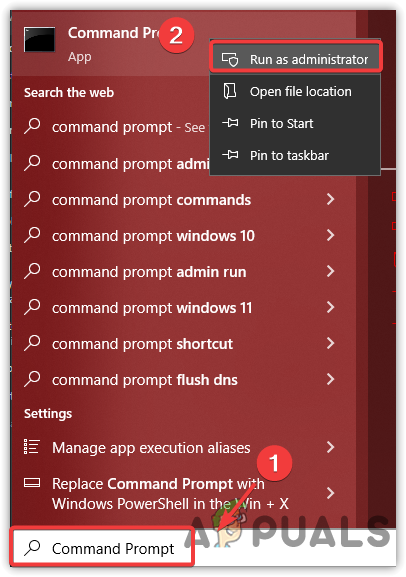
Run Terminal With Administrator - Once the terminal is launched, copy and paste the following commands and hit enter after each.
ipconfig /release ipconfig /renew
- Once done, reconnect with the Wifi network and see if the issue is fixed.
4. Remove Static IP
All internet-connected devices have the IP address assigned statically or dynamically. Static IP address assigns manually while dynamic IP address assigns automatically. The significant difference between them is static IP address cannot be changed over time, but dynamic IP address changes over time. According to the research, most users experienced this issue due to the static IP address, which conflicts with the IP address assigned by DHCP. Therefore, you will need to remove the static IP address by changing the network setting.
- To remove the static IP, press the Windows + R keys simultaneously
- Type Control Panel and click OK
- Go to the following path
control Panel\Network and Internet\Network and Sharing Center
- Click Change Adapter Settings and right-click on the current Network Adapter

Click to Navigate Change Adapter Settings - Select Properties, which will bring a short Window
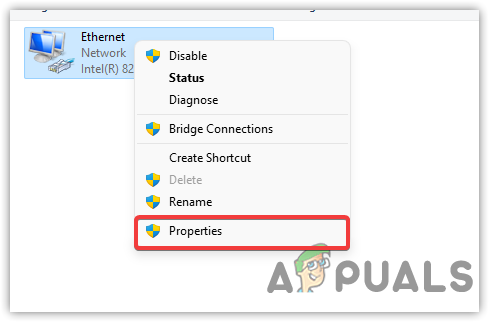
Click Properties - Locate for Internet Protocol Version 4 (TCP/IPv4)
- Then, click Properties and select Obtain An IP Address Automatically
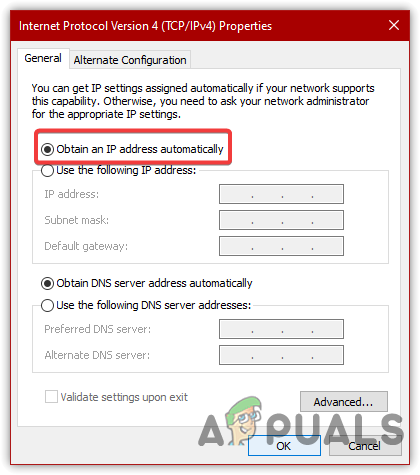
Select Obtain DNS Server Address Automatically - Once done, click OK and check if the issue persists.
5. Reinstall Network Driver
If the above methods fail to fix this, try restarting the network adapter, as it also resets the information of the network settings, including the IP address. But before proceeding, install the third-party network adapter if you used it. Otherwise, you can proceed directly to the steps. Below are the steps:-
- Press Windows + R keys at the same time to launch Run Program
- Type devmgmt.msc and click OK to navigate into it

Go to Device Manager - Now expand the Network Driver tab and right-click the current Network Adapter.
- Click Uninstall, then restart your computer for Windows to install the driver.

Uninstalling Network Driver - Once done, connect with the network and see if the issue is fixed.
6. Disconnecting Other Devices From Network
Another fix for this IP conflict is disconnecting other devices under the same network because the IP address your router assigned to your devices matches the IP address already configured. For that reason disconnecting the other devices will fix this issue.
7. Reset All Network Configurations
You can also reset your network settings if nothing works. Remember, this solution will remove all your network configurations like DNS settings, Virtual adapter assigned by VPN, proxy settings, and network adapter. Therefore, make sure to make a backup of your network adapter, as you won’t be able to download the network drivers if you use a custom network adapter. Remember, you must reset the network settings if something goes wrong during this process.
Before starting, we recommend you create a restore point so that you can restore all your drivers and files in the future.
7.1 Create a Restore Point
If you are unfamiliar with the restore point, it is a feature that takes Windows to a previous state. It takes a snapshot of the necessary files to restore them in the future. So if something goes wrong, you can restore the previous version of your Windows.
- To create a restore point, click Start Menu and type Create a Restore Point.
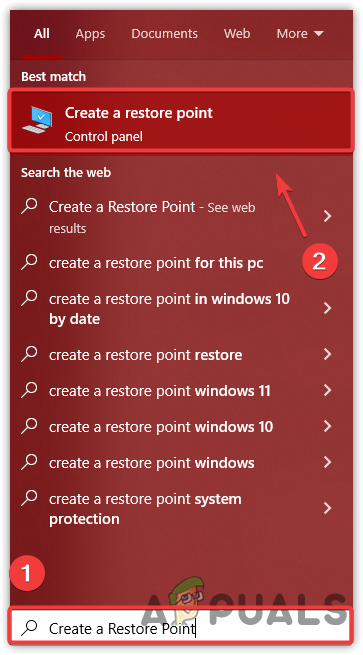
Open Create a Restore Point Settings - Open the Restore Settings, select the hard disk and click on Create
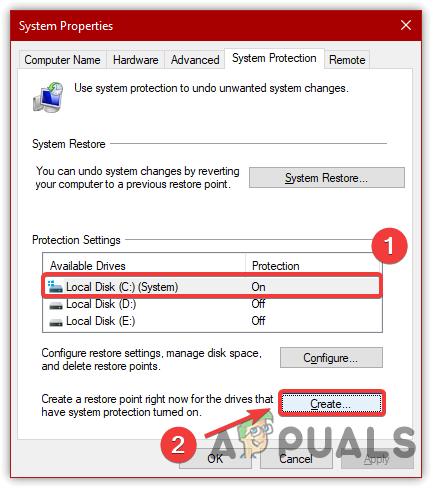
Click to Create a Restore Point Note: It is good to select the drive where Windows has installed
- Type the Restore Point name and click OK
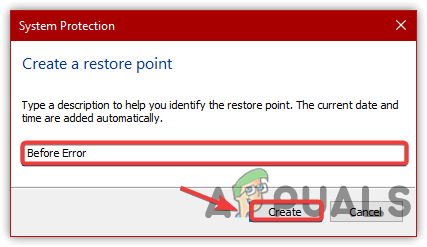
Naming the Restore Point - Wait for the process to finish, then you are good to go.
7.2 Resetting the Network Configuration
- To reset the network configuration, type the command prompt and open it as administrator.

Launch CMD - Type the following command and hit Enter
netcfg -d
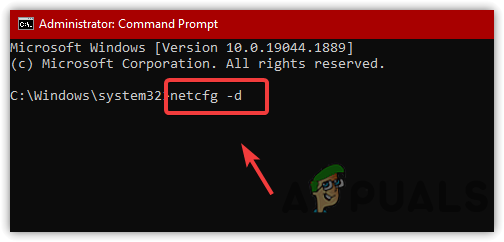
Executing Reset Network Command - Once done, restart your computer and connect with the wifi network to see if it fixes Windows has detected an IP address conflict.
8. Disable IPv6
IPv6 (Internet Protocol Version 6) is newly introduced in Windows. The purpose of this feature is it allows more TCP/IP addresses than IPv4. However, it can cause internet issues s Create such as this one. Just for that reason, try disabling IPv6 from the network control panel.
If this method works, you can re-enable it by following the same method as it may cause the issue. Below are the steps.
- From Start Menu, type Settings and open it
- Navigate to the Network & Internet

Go to Network & Internet - Select Change Adapter Options under Advanced Network Settings
- Right-click the network adapter and click Properties

Right-click to Select Properties - Find and uncheck Internet Protocol Version 4 (TCP/IPv6)
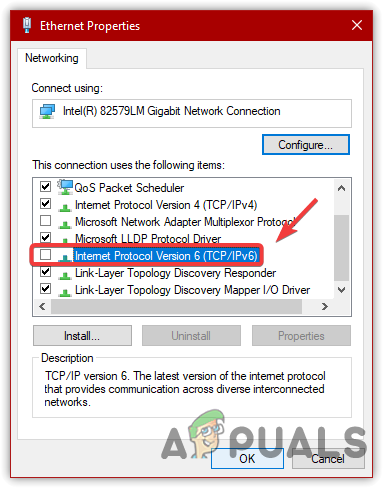
Disabling IPv6 - Once done, click OK to save the changes.
9. Contact Your ISP (Internet Service Provider)
If the error is not fixed after applying all workarounds, you will need to contact your ISP (Internet Service Provider) to inform them that you cannot connect your system with the Wifi. Also, recommend the ISP to reset the router to re-assign the IP addresses to all devices.
If all methods fail to fix, try using a different wifi network for some time, then r-connect to the problematic network connection to see if that helps.